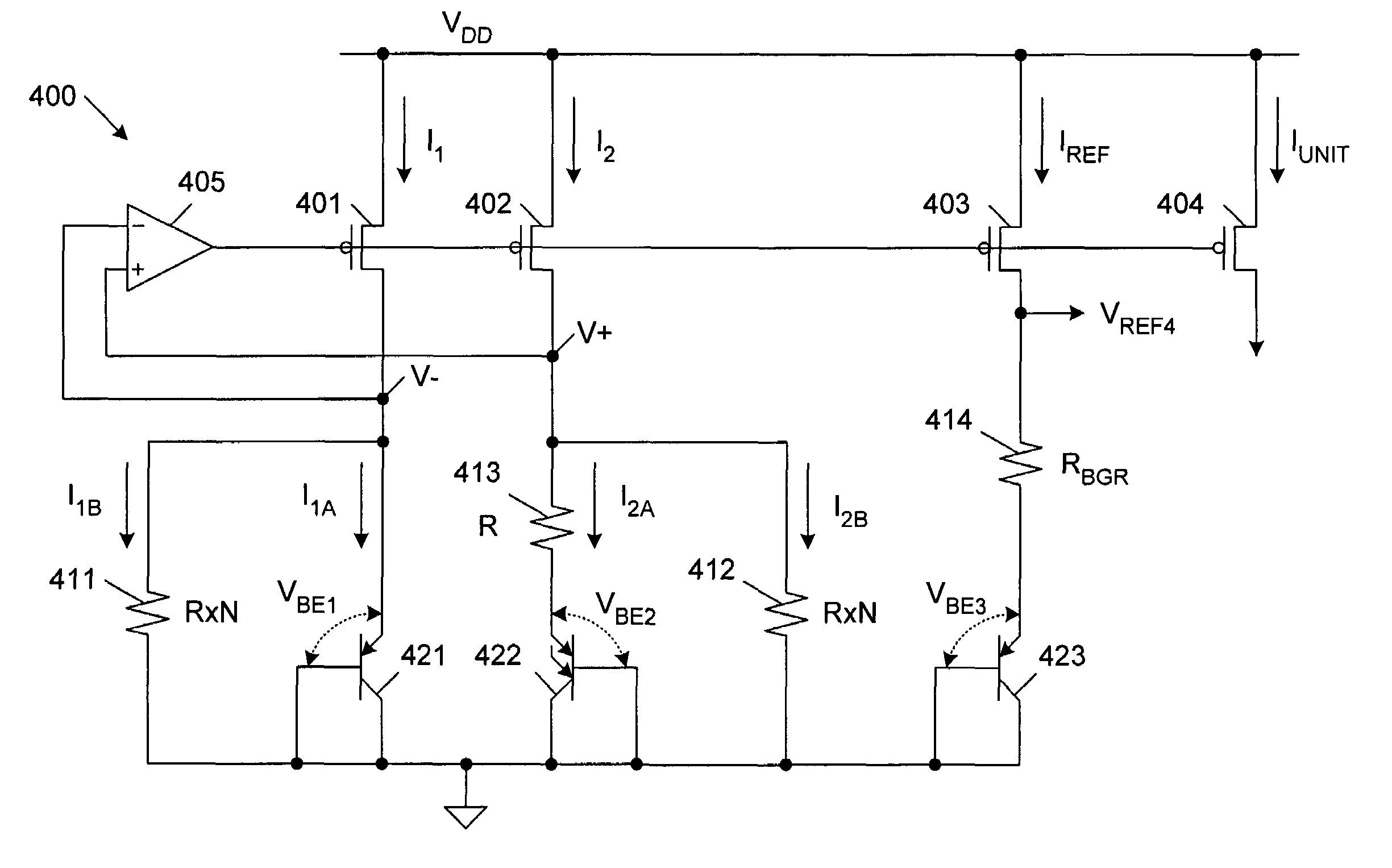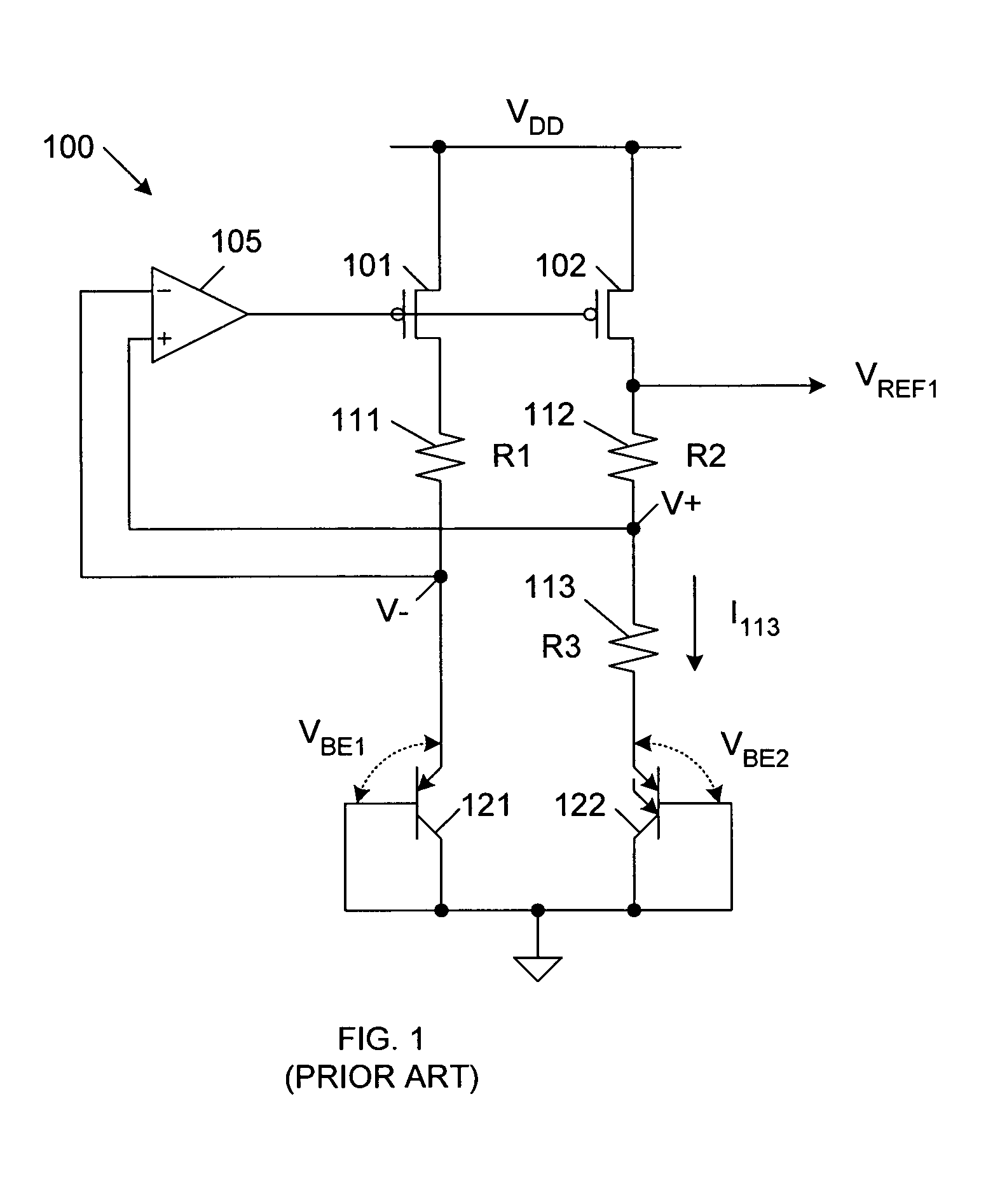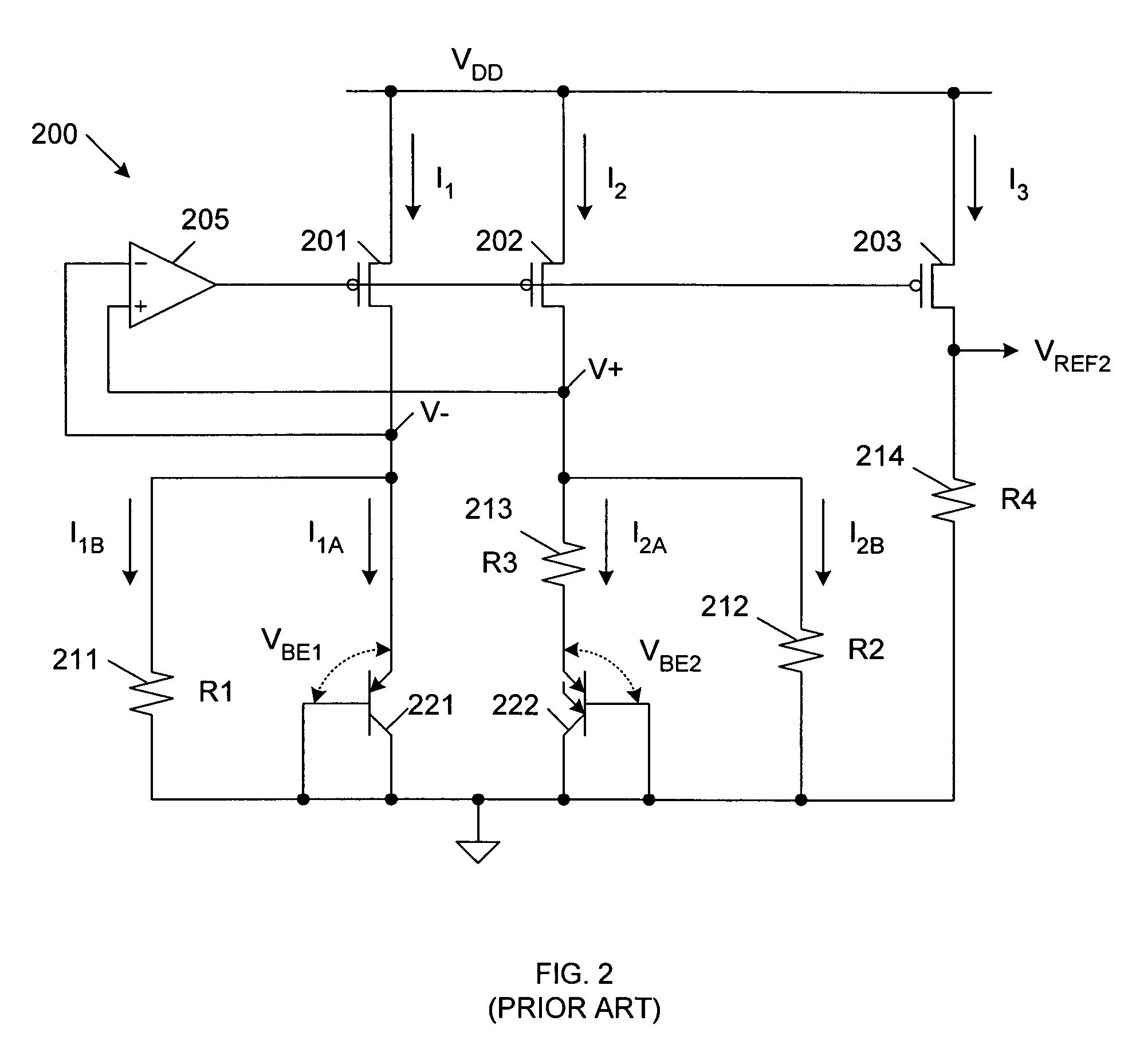Precise voltage/current reference circuit using current-mode technique in CMOS technology
a current-mode technique and voltage/current reference technology, applied in the direction of electric variable regulation, process and machine control, instruments, etc., can solve the problem of degrading the accuracy of current referen
- Summary
- Abstract
- Description
- Claims
- Application Information
AI Technical Summary
Benefits of technology
Problems solved by technology
Method used
Image
Examples
Embodiment Construction
[0029]FIG. 4 is a circuit diagram of an on-chip bandgap voltage and current reference circuit 400 in accordance with one embodiment of the present invention. Voltage / current reference circuit 400 can be used, for example, in CMOS analog / mixed signal chips.
[0030]Voltage reference circuit 400 includes PMOS transistors 401–404, operational amplifier 405, resistors 411–414 and PNP bipolar transistors 421–423. The dimensions of PMOS transistors 401–404 are the same. The sources of PMOS transistors 401–404 are coupled to the VDD voltage supply terminal. The drains of PMOS transistors 401 and 402 are coupled to the “−” and “+” input terminals of operational amplifier 405. The input voltages to the “−” and “+” input terminals of operational amplifier 405 are labeled as input voltages V− and V+, respectively. The output terminal of operational amplifier 405 is coupled to the gates of PMOS transistors 401–404. The currents through PMOS transistors 401, 402, 403 and 404 are designated as I1, I...
PUM
 Login to View More
Login to View More Abstract
Description
Claims
Application Information
 Login to View More
Login to View More - R&D
- Intellectual Property
- Life Sciences
- Materials
- Tech Scout
- Unparalleled Data Quality
- Higher Quality Content
- 60% Fewer Hallucinations
Browse by: Latest US Patents, China's latest patents, Technical Efficacy Thesaurus, Application Domain, Technology Topic, Popular Technical Reports.
© 2025 PatSnap. All rights reserved.Legal|Privacy policy|Modern Slavery Act Transparency Statement|Sitemap|About US| Contact US: help@patsnap.com



